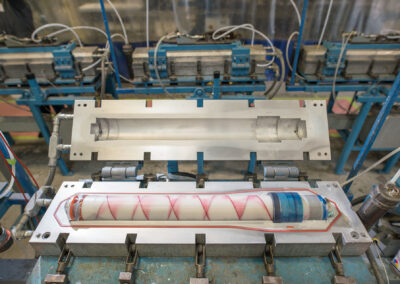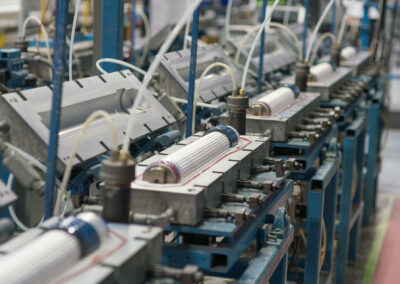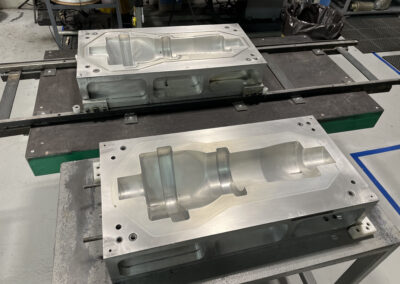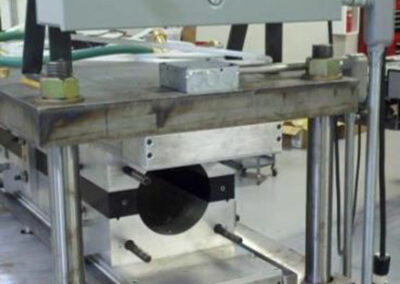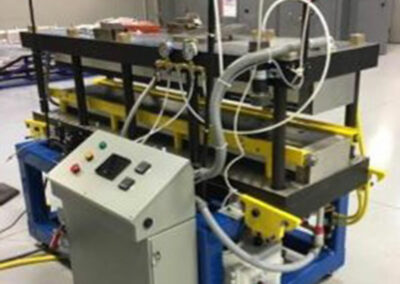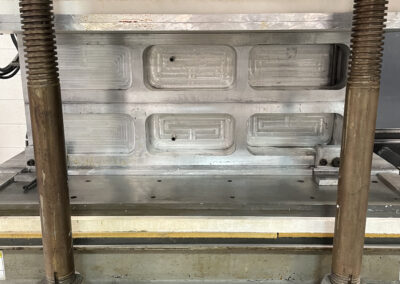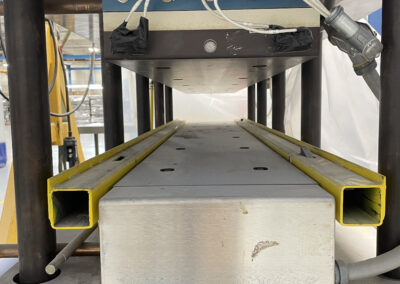Resin Transfer Molding
Resin Transfer Molding (RTM) technology is a high-precision manufacturing process that is ideal for producing complex composite components. A fiber preform is placed into a matched-metal mold cavity, which is subsequently closed and sealed. Vacuum is applied to the cavity, and a precisely controlled amount of resin is injected into the mold. Hydrostatic pressure is used to consolidate the preform. The part may be cured using a heated press, integral heaters, or in an oven.
Key Benefits of RTM
- Dimensional Control: All sides of the components are tooled, making it possible to achieve precise tolerances in the cured product. This may reduce the amount of post-processing or machining required after the part has been cured.
- Adaptability: The RTM process allows for the insertion of dissimilar materials from the preform that may be co-cured into the net shape part, such as foam core, metallic inserts, plastic components, electrical wiring, or other precured details.
- Quality: Due to the sealed environment where air can be evacuated prior to resin injection, the part laminate integrity is extremely high, typically exhibiting void content close to 0%.
- Scalability: RTM processes may be tailored to provide the initial cure inside the mold, while post-cure is accomplished outside the mold. This method may dramatically reduce cycle times, and the quantity of tools required to achieve full production rate throughput.
Nammo Composite Solutions has significant experience in manufacturing products using resin transfer molding. The company has assisted many customers on the design of RTM structures as to ensure manufacturability is considered. The company also has several hydraulic presses with heated platens, which typically provide the shortest cycle times. Nammo Composite Solutions has ample experience resin transfer molding components at high production rates – up to 100 parts per day. Many parts of this process may be automated to improve repeatability and reduce overall production costs. Nammo has successfully integrated many dissimilar materials into composite structures, and is well positioned to guide product designers on the best ways to achieve these benefits.

